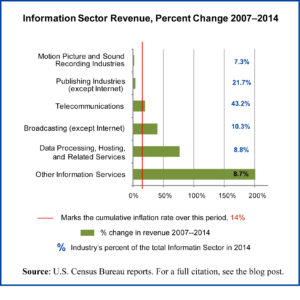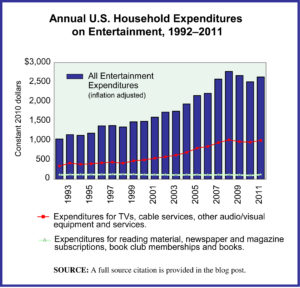
Along with the number of choices, the percentage of the U.S. population that is familiar with podcasting rose from 22% in 2006 to 70% in 2019.2 According to Edison Research and Triton Digital, 2019 was the first year that a majority of the U.S. population, 51% or an estimated 144 million people, reported ever listening to a podcast. Monthly listeners totaled 90 million while weekly listeners amounted to 62 million, or 22% of the population. This is more than triple the 7% of weekly listeners reported in 2013.3
Why do people listen to podcasts? Top reasons include: to learn new things, to be entertained, and to stay up-to-date with the latest topics. But many forms of media allow a person to do those things. Why podcasts? Listeners report that they like that they can do other things while listening, podcasts are portable, and they can listen wherever they are.
The potential of earning money from advertising motivates many to develop a podcast. Podcast advertising revenue in 2019 was expected to reach $679 million and is projected to climb to $863 million in 2020 and more than $1 billion in 2021. Popular podcasts charge between $10 and $50 for every thousand listeners, which is two or three times more expensive than the rate for broadcast radio. Do podcast advertisements work? Fifty-four percent of listeners surveyed reported that they were more likely or much more likely to consider brands advertised on podcasts. Only 7% of listeners reported that they were less likely or much less likely to consider brands advertised on that platform. The other 39% were neutral. Some large, well-known companies sponsor podcasts; others are producing their own.
Some podcasting apps and media companies such as Stitcher Premium, Luminary, and Slate Plus (affiliated with Slate Magazine) offer a small number of podcasts and exclusive content for a monthly fee. Heavy podcast users, those that listen 6 or more hours a week, and new listeners are more likely to pay for content.
Top podcast publishers by number of unique listeners in the United States for January 2020 include NPR (23.7 million unique listeners), iHeartRadio (21.9 million), Wondery (10.2 million), PRX (9.32 million), and The New York Times (9.26 million). Top podcasts: The Daily (published by The New York Times), NPR News Now (NPR), Up First (NPR), Stuff You Should Know (iHeartRadio), and The Ben Shapiro Show (Daily Wire). The most popular apps for downloading and streaming podcasts are Apple Podcasts, Spotify, Stitcher, SoundCloud and Google Podcasts.
1 The reported number of podcasts and episodes available vary by source. A November 2019 Forbes article noted: “There are now over 800,000 active podcasts with over 54 million podcast episodes currently available worldwide.”
2 U.S. population 12 years of age and older.
3 2013 was the first year for which there are data.
Geographic reference: World
Year: 2020
Market size: More than 850,000 (More than 30 million episodes)
Sources: Ross Winn, “2020 Podcast Stats & Facts (New Research from Jan 2020),” Podcast Insights, February 7, 2020 available online here; Brad Adgate, “Podcasting is Going Mainstream,” Forbes, November 18, 2019 available online here; Melissa Locker, “Apple’s Podcasts Just Topped 50 Billion All-Time Downloads and Streams,” Fast Company, April 25, 2018 available online here; The Infinite Dial 2019, Edison Research and Triton Digital, 2019 available online here; Brad Hill, “Edison/Triton: ‘Consequential Year’ for Podcasting in New Podcast Consumer Report,” Kurt Hanson’s Radio & Internet News, April 11, 2019 available online here; “Top Publishers,” Podtrac available online here; “Top Podcasts,” Podtrac available online here; Mia Breunissen, “27 Most Popular Podcast Apps,” We Edit Podcasts, June 19, 2019 available online here.
Image source: Jonathan Farber, “Podcasting Setup With Headphones, Desk and Professional Microphone,” Unsplash, September 4, 2019 available online here.




